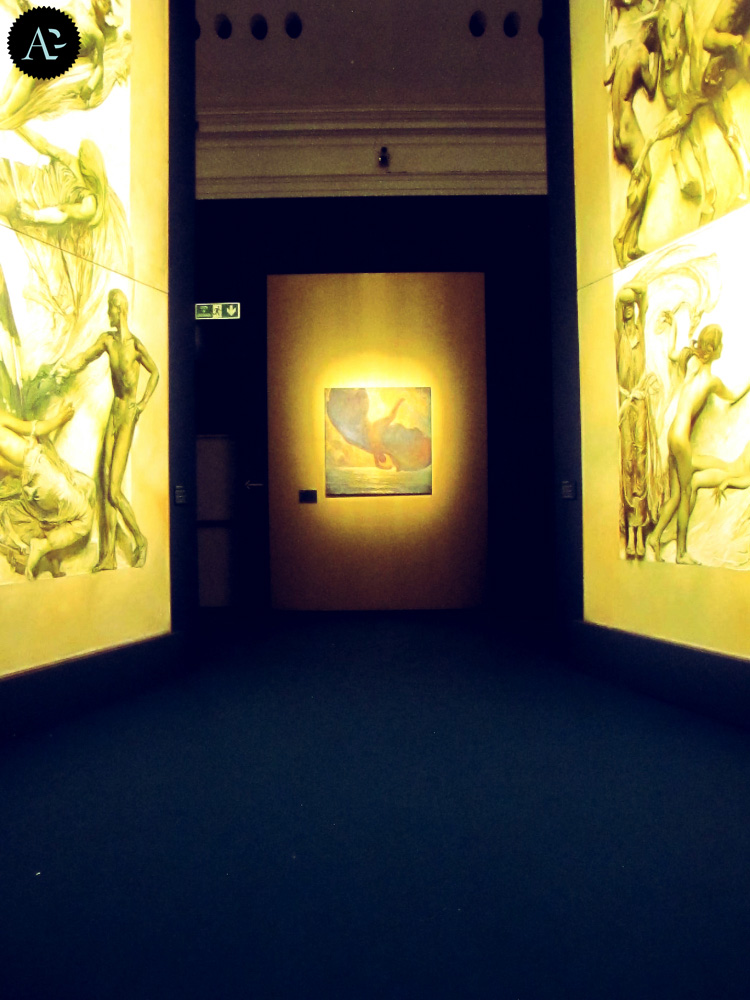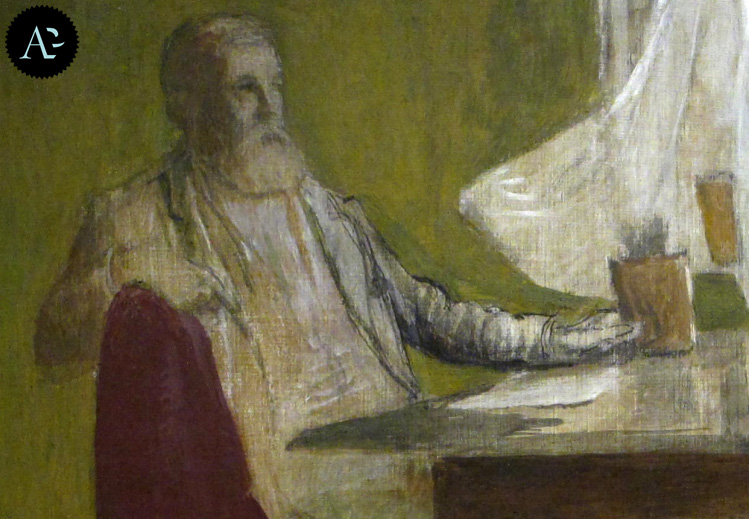Symbolism on exhibition in Milan

Symbolism on exhibition in Milan.
Good and Evil, Light and Darkness, Love and Death.
Each dark side and fears of Symbolism are on display in Milan until 5 June 2016. The exhibition is entitled “Symbolism. Art in Europe from Belle Époque to World War I”.
It is the first great exhibition held in Palazzo Reale in 2016. It is devoted to one of the most difficult artistic movement to define, born in the late 19th century, whose protagonists do not belong to a well-defined group of artists.
I attended the opening of the exhibition and I’m going to tell you in this post.

Fernand Khnopff , Caresses (1896)
I did like the exhibition. It was really good. But take up my suggestion of spending at least two hours there! In some rooms you might stay only few minutes, whereas in other rooms you might spend long and never-ending minutes, enjoying some masterpieces. You must attend this exhibition if you really want to understand Symbolism.
Read also: a definition of Symbolism.
Let yourself be enchanted by the almost 150 pieces of art displayed, visit the 24 exhibition rooms of Palazzo Reale, and the 18 parts into which the tour is divided. This way you can fully understand where visions, doubts, and anguish of the Symbolist masterpieces sprang from.
The Symbolism is the dark side of the Belle Époque, calls into questions the omnipotence of science, progress, modernity, Impressionism, and seeks refuge in a land made of dreams and nightmares emerging from the subconscious.
Baudelaire and his verses taken from the volume “Les Fleurs du mal” (“The Flowers of Evil”) will accompany you along this tour. In fact, the key words of Symbolism were taken from his work: nightmare and dream, demon and angel, death and life, darkness and light, evil and good.
For the first time in Italy some masterpieces of the Symbolism are on exhibition, such as “The Caress” by Khnopff; “La Mort d’Orphèe” (“The death of Orpheus”) by Jean Delville; “The silence of the forest” by Bocklin; the huge series of paintings by Aristide Sartorio “Il poema della vita umana” (“The poem of human life”) depicted for the 1907 Venice Biennale. There are also works by Gustave Moreau, by Segantini, by Previati and many more.
It’s the first time an exhibition has compared and contrasted Italian and foreign Symbolists, has examined in depth a fascinating period of the history of art and has brought to Milan some masterpieces, including at last 10 masterpieces which have been restored for this purpose.
The exhibition ends on 5 June 2016. Don’t miss it!

Victor Prouvè, the second circle – the Voluptuous (1889)

Wilhelm List, The offering – the miracle of the roses (1900 circa)


Giorgio Kienerk, The Human Enigma: Pain, Silence, Pleasure (1900)

Albert von Keller, In the moonlight (1894)

Giulio Aristide Sartorio, La Sirena (1893)

Gustave Moreau, Hesiod and the muse (1891)

Arnold Böcklin, The silence of the forest (1885) – dettaglio

Arnold Böcklin, Self-portrait (1898 – 1899)

Gaetano Previati, The Eroica (1907) – dettaglio

Jean Delville, Death of Orpheus (1893)
INFO
Il Simbolismo. Arte in Europa dalla Belle Époque alla Grande Guerra
Palazzo Reale, Milano
February 3- June 5, 2016
LINK
http://www.mostrasimbolismo.it
PICTURES
All the pictures with logo are property of The Art post Blog,
Follow me on:
About me
In this blog, I don't explain the history of art — I tell the stories that art itself tells.


